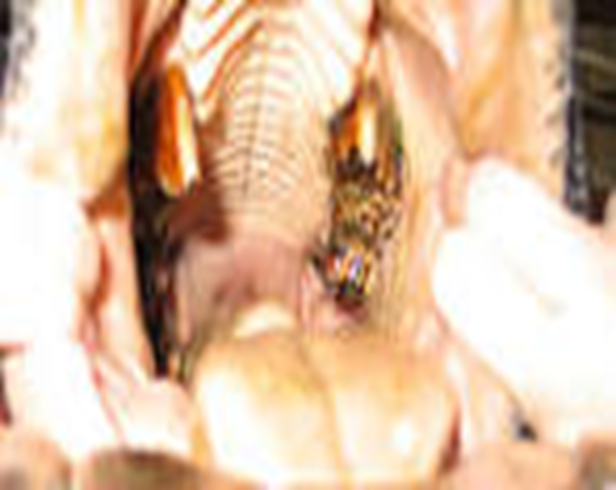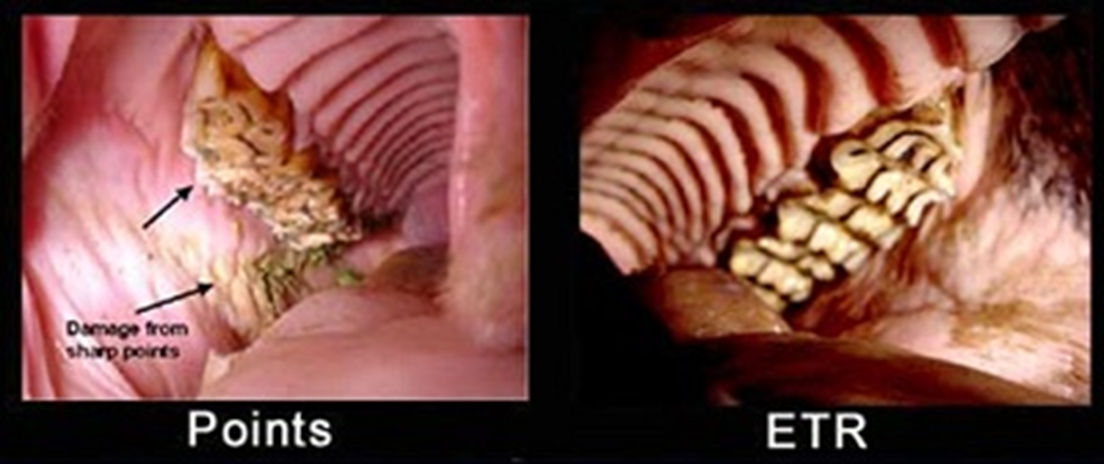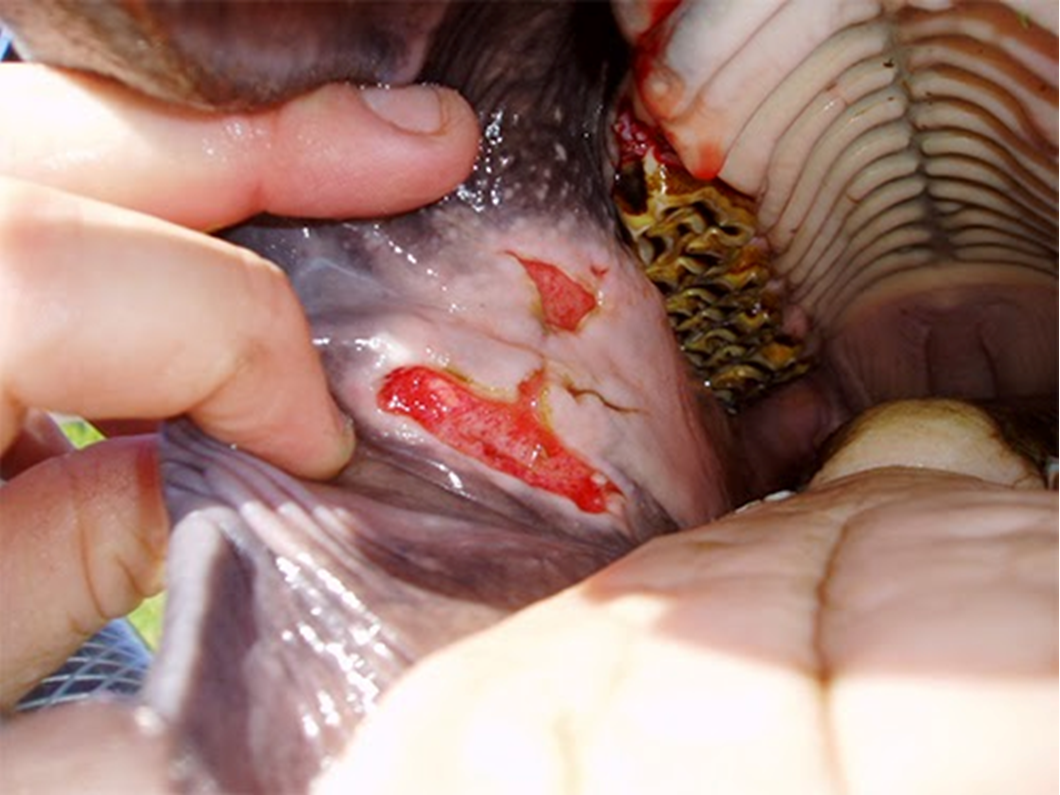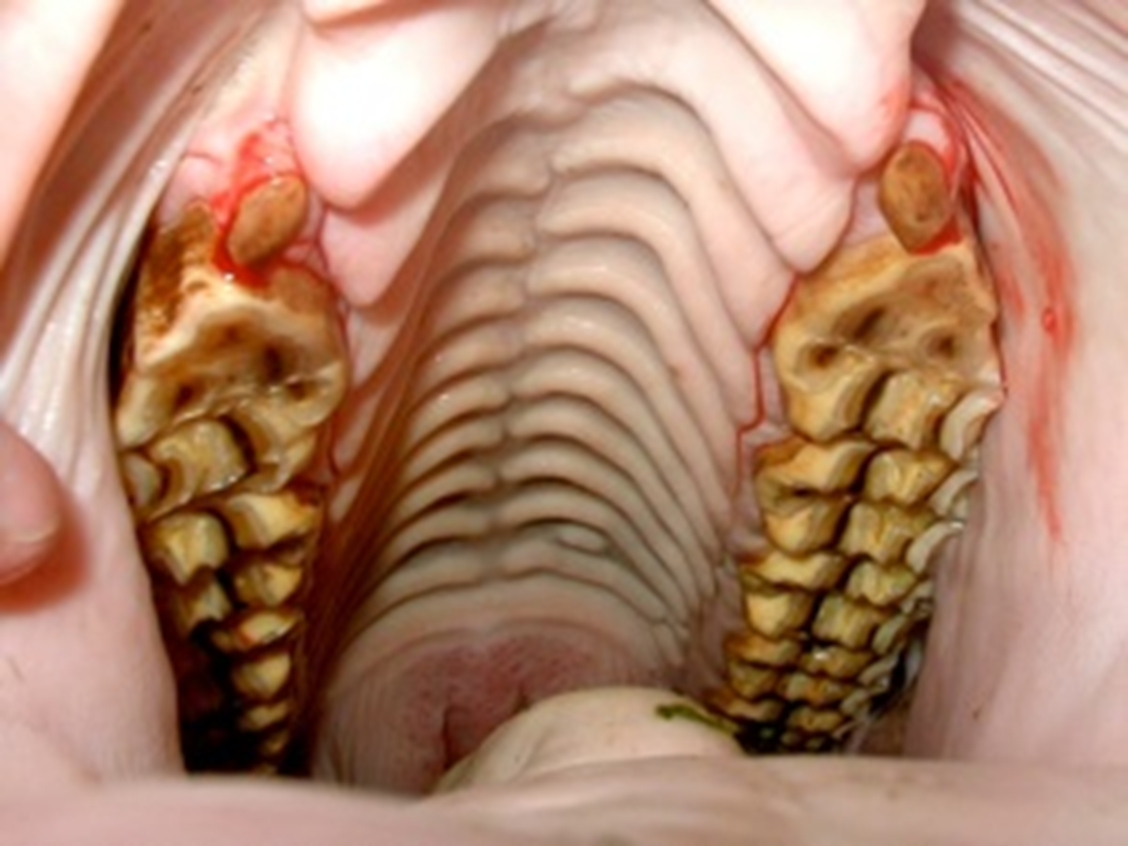Is horse’s dentistry up-to-date & bit fitted? Often hooks on these teeth impinge on the action of the bit.
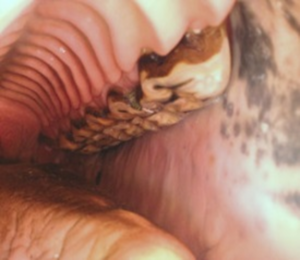
The image below is of exaggerated hooks however surprisingly very common. They create huge issues with whole body welfare, particularly digestion/mastication and definitely issues with bits –contact/control. This condition is often mimicked at the back (311 & 411).
Excessive Transverse Ridges ETR
This dental condition stops the jaw from moving in the necessary lateral movement for mastication & flexion. Though some ridging is necessary if too deep it stops the movement. Mastication becomes an up & down pattern which can create muscoskeletal issues.
Sharp Points & Pain
Most horses work through degrees of dental pain however it is often not corrected sufficiently. The sharp points on the cheek side[buccal] & lingual[lower tongue surface} are necessary for chewing however they must not be too sharp & uneven as they create issues which can often be misdiagnosed. Excessively sharp points can create lacerations and wounds in the mouth which affects whole wellbeing not just riding. After your dentist has visited-ask to see & feel the teeth.
Wolf Teeth
The Wolf teeth, first premolars are remnant teeth from horse’s evolution and have no function. They directly impinge on the position of the Bit in the mouth. Some horses don’t get them, some are big, pointy, small flat deep rooted or shallow but all are different. Bitted horses should have them extracted to ensure no interference with bit.
